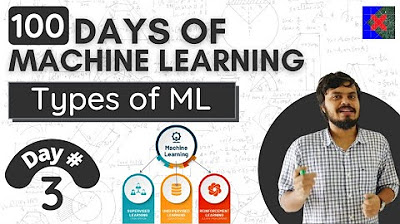Analisis Kompleksitas Algoritma Bag. 1 (Tutorial Algoritma)
Summary
TLDRThis lecture discusses the importance of selecting efficient algorithms to solve problems, emphasizing the impact on processing speed and resource usage. It introduces the concept of algorithm complexity and outlines methods to measure efficiency, focusing on time complexity as the primary metric. The instructor explains the limitations of real-time measurements due to varying computer architectures and programming languages, advocating for the abstract model of time complexity to evaluate algorithms objectively.
Takeaways
- 😀 The lecture discusses the complexity of algorithms and how to determine which algorithm is efficient.
- 🕵️♂️ The importance of choosing an efficient algorithm is emphasized, as it affects the speed of solving a problem.
- 📊 Efficiency is measured in terms of time and memory usage, with less efficient algorithms requiring more resources.
- 💡 The first learning objective is to understand how to measure the efficiency of algorithms using various approaches and methods.
- 🌐 The concept of the 'real-time' model for measuring algorithm efficiency is introduced, which involves calculating the time taken for an algorithm to execute.
- ⏱️ The real-time model is criticized for its lack of standardization due to varying computer architectures and programming languages.
- 🔄 An alternative to the real-time model is the 'abstract' model, which includes time complexity and space complexity approaches.
- 📚 Time complexity (T(n)) is defined as a function that depends on the amount of input, representing the number of computational processes required.
- 🔢 The abstract model is deemed more practical for measuring efficiency because it focuses on the number of computations within an algorithm.
- 📈 Examples are given to illustrate how to identify and compare time complexities of different algorithms to determine which is more efficient.
- 📉 The conclusion is that for large values of 'n', Algorithm A is more efficient, while for smaller values, Algorithm B might be more efficient.
Q & A
What is the main topic discussed in the script?
-The main topic discussed in the script is the complexity of algorithms, specifically how to determine the efficiency of an algorithm.
Why is it important to choose an efficient algorithm?
-Choosing an efficient algorithm is important because it impacts the speed at which a problem is solved. The faster the algorithm can process the problem, the better.
What are the factors that affect the efficiency of an algorithm?
-The efficiency of an algorithm is affected by its memory and time requirements. An efficient algorithm consumes less memory and time.
How does the size of input affect the efficiency of an algorithm?
-The size of input affects the efficiency of an algorithm because larger inputs generally require more processing time and memory.
What is the real-time model for measuring algorithm efficiency?
-The real-time model measures the efficiency of an algorithm by calculating the actual time it takes to execute on a computer.
Why is the real-time model not considered a standard method for measuring algorithm efficiency?
-The real-time model is not standard because it varies with different computer architectures, processors, and programming languages, making it inconsistent.
What is the abstract model for measuring algorithm efficiency?
-The abstract model measures algorithm efficiency by considering the number of computational processes required, independent of the actual execution time.
What are the two approaches within the abstract model for measuring efficiency?
-The two approaches within the abstract model are time complexity (denoted as T(n)) and space complexity.
How is time complexity (T(n)) defined in the context of algorithm efficiency?
-Time complexity (T(n)) is defined as a function that depends on the amount of input, representing the number of computational processes required by the algorithm.
Can you provide an example of how time complexity is used to compare two algorithms?
-Yes, if Algorithm A has a time complexity of 5000n and Algorithm B has a time complexity of 1.1 * n^2, by comparing these complexities for different values of n, we can determine which algorithm is more efficient.
How does the script suggest determining the time complexity (T(n)) for an algorithm?
-The script suggests determining the time complexity by looking at the number of computational processes within the algorithm and how it scales with the input size.
Outlines

此内容仅限付费用户访问。 请升级后访问。
立即升级Mindmap

此内容仅限付费用户访问。 请升级后访问。
立即升级Keywords

此内容仅限付费用户访问。 请升级后访问。
立即升级Highlights

此内容仅限付费用户访问。 请升级后访问。
立即升级Transcripts

此内容仅限付费用户访问。 请升级后访问。
立即升级浏览更多相关视频

03. Berpikir Komputasional - Solusi Optimal dengan Algoritma Pintar - Informatika Kelas XII

ALGORITMA dalam PEMROGRAMAN

Time Driven Based Coasting

Mengenal Algoritma - Algoritma dan Pemrograman - Materi Informatika Kelas 8 SMP/MTs

Idea of Algorithms

Types of Machine Learning for Beginners | Types of Machine learning in Hindi | Types of ML in Depth
5.0 / 5 (0 votes)
